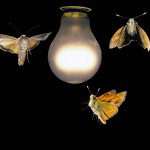 Last week was National Moth Week. Until I heard about it on the radio, I didn’t know there was such a thing. This year was the ninth annual, established by a handful of moth-loving people in an attempt to increase appreciation for the 160,000 different species of moths.
Last week was National Moth Week. Until I heard about it on the radio, I didn’t know there was such a thing. This year was the ninth annual, established by a handful of moth-loving people in an attempt to increase appreciation for the 160,000 different species of moths.
One of my children absolutely hates moths. When leaving the house after dark, Birgitta dashes through a multitude of fluttering wings on our front porch with screams of distaste and panic. “Get off me!” she shrieks, if one of them touches her.
 “What exactly do you hate about them?” I said.
“What exactly do you hate about them?” I said.
“Their furry bodies.”
“But aren’t they kinda fluffy-cute?”
“Absolutely not!” she said, shuddering.
Maybe the real reason moths are unloved is their nocturnal habits. They join bats, owls, and other scary creatures of the dark. Their butterfly cousins, flitting about in the sunshine, represent good luck and new beginnings. But moths? Tradition has them symbolizing “dangerous attraction leading to unhappiness.” After all, flying into fire to get close to a light is about as unhappy as it gets.
 Why would God program a moth to fly toward light? The answer is pretty interesting. Porch lights and fires weren’t his original intention. Instead, he wanted them to look up.
Why would God program a moth to fly toward light? The answer is pretty interesting. Porch lights and fires weren’t his original intention. Instead, he wanted them to look up.
God gave moths the ability to calibrate their flight paths using the moon as their primary reference point. So the unsung moth should get a little appreciation for being aerodynamically sophisticated. But they get into trouble when they confuse porch lights or fires with moonlight. One expert put it this way: “A moth’s attraction to an artificial light or a fire could be related to orientation, which leads to disorientation since the moth wasn’t expecting to actually get to ‘the moon.’ Then confusion results.”
I think of how different this is from flying toward the Light described in Scripture. Jesus was and is the self-proclaimed “Light of the World.” The closer we get to him, the greater our benefits. Unlike a moth becoming disoriented by flying too close to a light, we become more clear-headed the closer we get to Jesus.
Light is light as far as a moth is concerned, and the one light God intended as their guide (the moon) isn’t always the one they follow. When they get burned, it’s too late. Watching this happen, we could take a lesson.
God intends for us to follow only one Light, too, but sometimes we become attracted to people or things that seem just as good as Jesus and his values. When we do that, we get every bit as disoriented as a zig-zagging moth.
Maybe National Moth Week is a good time to make an annual check of our light source. If we catch ourselves heading toward the wrong one, we could reorient ourselves toward the Light of the World and avoid getting badly burned.
Jesus said, “I am the light of the world. Whoever follows me will never walk in darkness, but will have the light of life.” (John 8:12)



